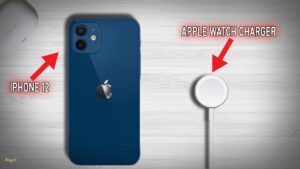Looking for the right battery for your car? Wondering, “What battery fits my car?” Don’t worry, we’ve got you covered! In this article, we’ll guide you through the process of finding the perfect battery to keep your car running smoothly. Whether you’re a seasoned car enthusiast or a novice driver, understanding the battery requirements for your vehicle can be a daunting task. But fear not, as we break it down into simple steps that will make the whole process a breeze. So, let’s dive in and explore the world of car batteries, because finding the right one is crucial for your beloved vehicle’s performance and longevity.
What Battery Fits My Car?
When it comes to finding the right battery for your car, it can be a daunting task. With so many options available on the market, it’s important to understand what factors to consider in order to make the best choice for your vehicle. In this comprehensive guide, we will explore everything you need to know about choosing the right battery for your car.
Understanding Car Batteries
Before diving into the specifics of choosing a battery, it’s crucial to have a basic understanding of car batteries and how they work. Car batteries are rechargeable devices that provide electrical energy to the vehicle’s electrical system. They are responsible for starting the engine, powering the lights, and running various electrical components.
Car batteries typically consist of lead-acid cells and are categorized based on their size, voltage, and capacity. The most common type of car battery is the lead-acid battery, which is designed to deliver a high amount of current in a short period of time, as required during engine startup.
Types of Car Batteries
There are several types of car batteries available on the market, each with its own advantages and disadvantages. Here are some of the most common types:
1. Flooded Lead-Acid Batteries: These are the traditional car batteries that have been used for decades. They consist of lead plates submerged in a sulfuric acid electrolyte. Flooded lead-acid batteries require regular maintenance, such as checking the electrolyte levels and topping them up with distilled water.
2. Absorbent Glass Mat (AGM) Batteries: AGM batteries are a newer technology that offers several advantages over flooded lead-acid batteries. They use a glass mat separator to hold the electrolyte, which eliminates the need for maintenance. AGM batteries are also more resistant to vibration and have a higher cranking power.
3. Gel Batteries: Gel batteries are another type of sealed lead-acid battery. They use a gel electrolyte instead of a liquid one, making them leak-proof and maintenance-free. Gel batteries are known for their deep cycling capabilities, making them suitable for applications that require frequent discharging and recharging.
Determining the Right Battery Size
One of the most important factors to consider when choosing a battery for your car is the size. The battery size refers to its physical dimensions and terminal placement. A battery that is too large or too small may not properly fit in the battery compartment, potentially causing damage to the vehicle.
To determine the right battery size for your car, you can follow these steps:
1. Consult the Owner’s Manual: The owner’s manual of your car will often provide information about the recommended battery size. Look for the specifications section or the maintenance section of the manual.
2. Check the Current Battery: If you have the current battery installed in your car, you can check its physical dimensions and terminal placement. Most batteries have labels indicating their size, such as group number and BCI (Battery Council International) number. Use this information to find a replacement battery with a similar size.
3. Use an Online Battery Finder Tool: Several manufacturers and retailers offer online battery finder tools. These tools allow you to input your car’s make, model, and year to find the compatible battery options. They provide the recommended battery size and specifications.
Battery Group Sizes
Car batteries come in different group sizes, which determine their physical dimensions. The Battery Council International (BCI) has established standard group sizes for automotive batteries. Here are some of the most common group sizes:
– Group 24: These batteries are generally used in compact cars and small to mid-sized sedans.
– Group 34/78: This is a dual-terminal battery size commonly found in larger vehicles and trucks.
– Group 35: This size is often used in smaller vehicles that require a higher cranking power.
– Group 48/H6: These batteries are commonly used in mid-sized to larger sedans and SUVs.
– Group 49/H8: This size is commonly used in larger vehicles with higher electrical demands, such as trucks and SUVs.
It’s important to note that not all group sizes will fit every car, even if they have the same physical dimensions. Factors such as terminal placement and compatibility with the vehicle’s electrical system should also be considered.
Battery Specifications
In addition to the size, there are several other specifications to consider when choosing a battery for your car. These specifications will determine the battery’s performance and compatibility with your vehicle. Here are some important battery specifications to pay attention to:
1. Cold Cranking Amps (CCA): CCA refers to the battery’s ability to deliver a high amount of current at a cold temperature. It is crucial for starting the engine, especially in cold climates. The higher the CCA rating, the better the battery’s performance in cold conditions.
2. Reserve Capacity (RC): RC indicates the battery’s ability to run the vehicle’s electrical components when the alternator is not charging. It is a measure of how long the battery can sustain a 25-amp load before it drops below a specified voltage. A higher RC rating means the battery can provide power for a longer time.
3. Voltage: Most vehicles require a 12-volt battery. However, some specialized vehicles, such as recreational vehicles (RVs) and boats, may require a 6-volt battery or multiple batteries connected in series to provide the needed voltage.
4. Brand and Quality: Opting for a reputable battery brand known for its quality and reliability is important. Batteries from well-known brands often come with warranties and have undergone rigorous testing to ensure performance and longevity.
Maintenance and Care
Proper maintenance and care are essential to ensure the longevity and optimal performance of your car battery. Here are some tips to keep your battery in good shape:
– Regularly inspect the battery for signs of corrosion or damage. Clean the battery terminals and connections if necessary.
– Keep the battery and its surroundings clean and free from dirt and debris.
– Check the electrolyte levels (for flooded lead-acid batteries) and top up with distilled water if needed.
– Test the battery’s voltage and charging system regularly to ensure it is functioning properly.
– If your vehicle will be parked for an extended period, consider using a battery maintainer or disconnecting the battery to prevent draining.
Choosing the right battery for your car is crucial for its performance and longevity. By understanding the basics of car batteries, determining the right size and specifications, and taking proper care of the battery, you can ensure that your vehicle starts reliably and all electrical components function as intended. Remember to consult your owner’s manual and use online resources to find the best battery options for your specific vehicle. With the right battery in place, you can hit the road with confidence and peace of mind.
Frequently Asked Questions
Which battery size is suitable for my car?
The battery size that is suitable for your car depends on the make and model of your vehicle. You can refer to your car’s owner’s manual or check the specifications of your existing battery to determine the appropriate size.
What type of battery should I choose for my car?
The type of battery you should choose for your car depends on its specific requirements and your driving habits. The most common types of car batteries are lead-acid batteries, which include both conventional flooded batteries and sealed AGM (Absorbent Glass Mat) batteries. AGM batteries are generally recommended for vehicles with advanced electrical systems or those that undergo frequent deep discharging.
How do I know the battery’s cold cranking amps (CCA) requirement for my car?
The required cold cranking amps (CCA) for your car can usually be found in the owner’s manual or by checking the specifications of your existing battery. It is important to choose a battery with a CCA rating that meets or exceeds the manufacturer’s recommendation to ensure reliable starting performance, especially in colder climates.
Can I use a higher capacity battery for my car?
While it is possible to use a higher capacity battery for your car, it may not necessarily provide any significant benefits. It is generally recommended to choose a battery that meets the manufacturer’s specifications to ensure compatibility with your vehicle’s charging system and prevent any potential issues.
Can I replace my car battery with a different brand?
Yes, you can replace your car battery with a different brand as long as it meets the required specifications for your vehicle. It is important to choose a reputable brand that offers reliable performance and matches the battery size, type, and other relevant specifications.
How often should I replace my car battery?
The lifespan of a car battery can vary depending on various factors, such as usage habits, climate conditions, and maintenance. On average, car batteries tend to last between 3 to 5 years. If you notice signs of a weak battery, such as slow cranking or dim headlights, it may be time to replace it.
Final Thoughts
In conclusion, finding the right battery for your car is essential for its smooth functioning. To determine which battery fits your car, consider factors such as the make, model, and year of your vehicle. Always check the battery’s specifications and the recommended battery size provided by the manufacturer. Additionally, consulting with a trusted mechanic or referring to the owner’s manual can help ensure you select a compatible battery. By taking these steps, you can easily determine what battery fits your car and keep it running efficiently.



